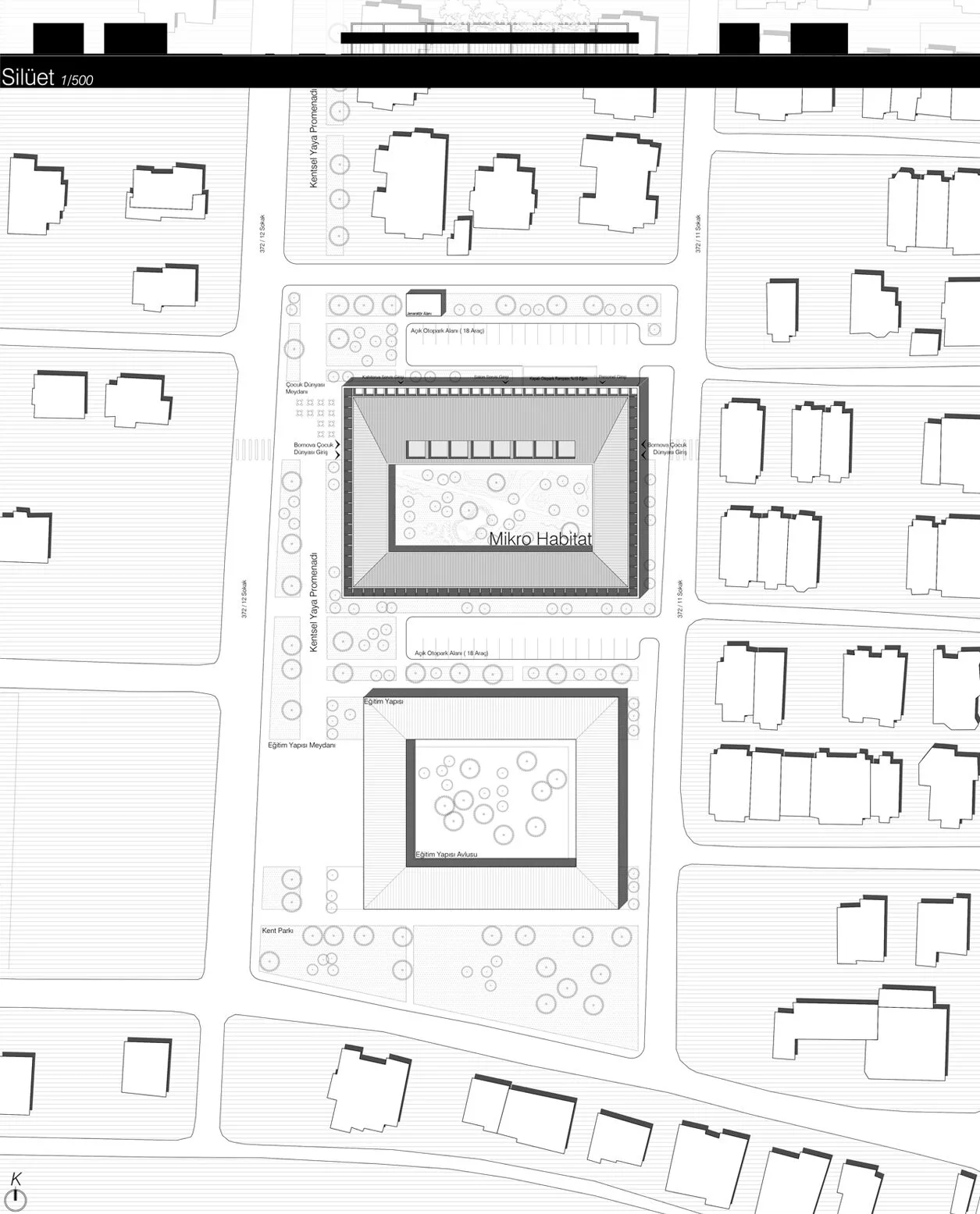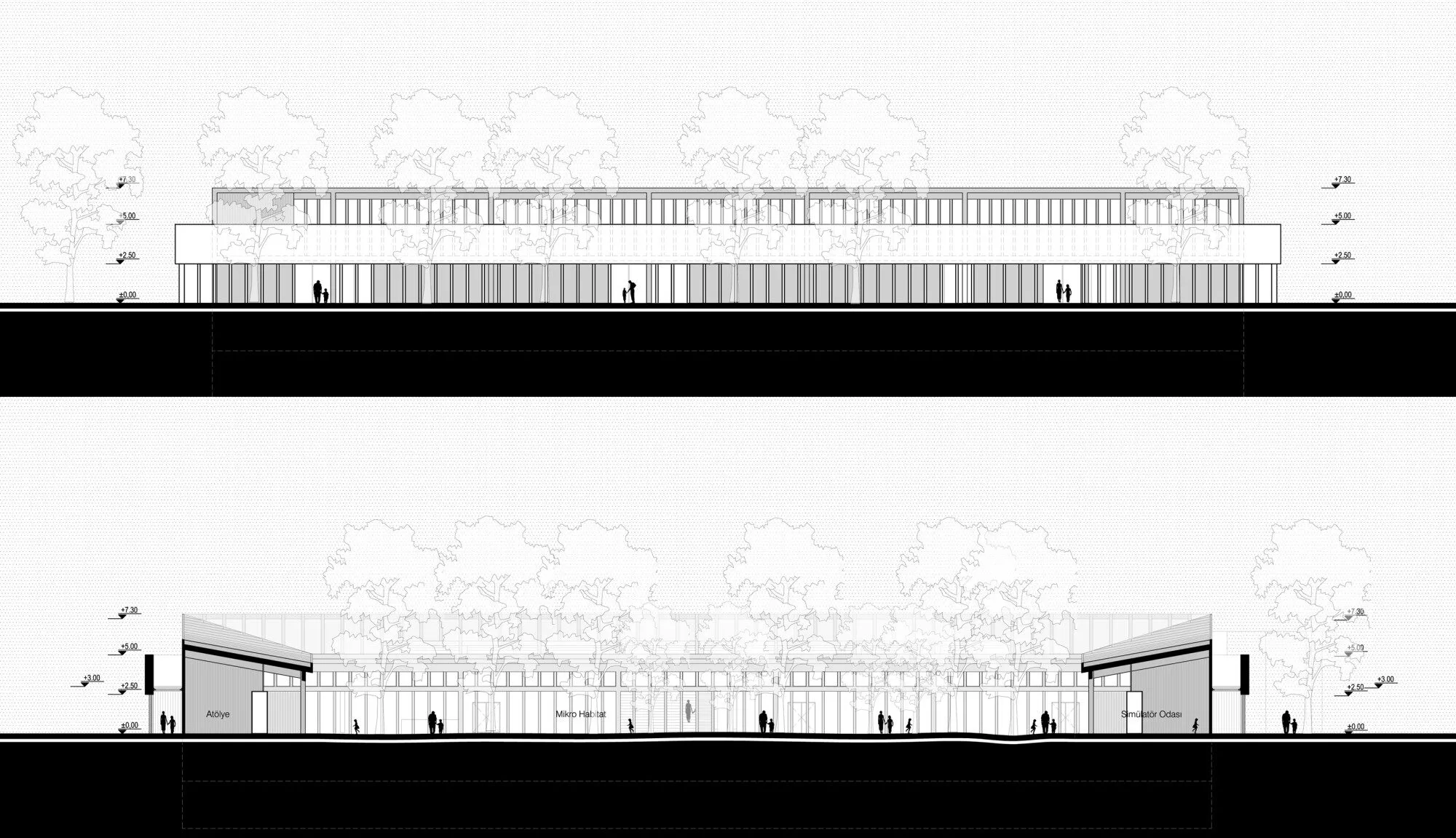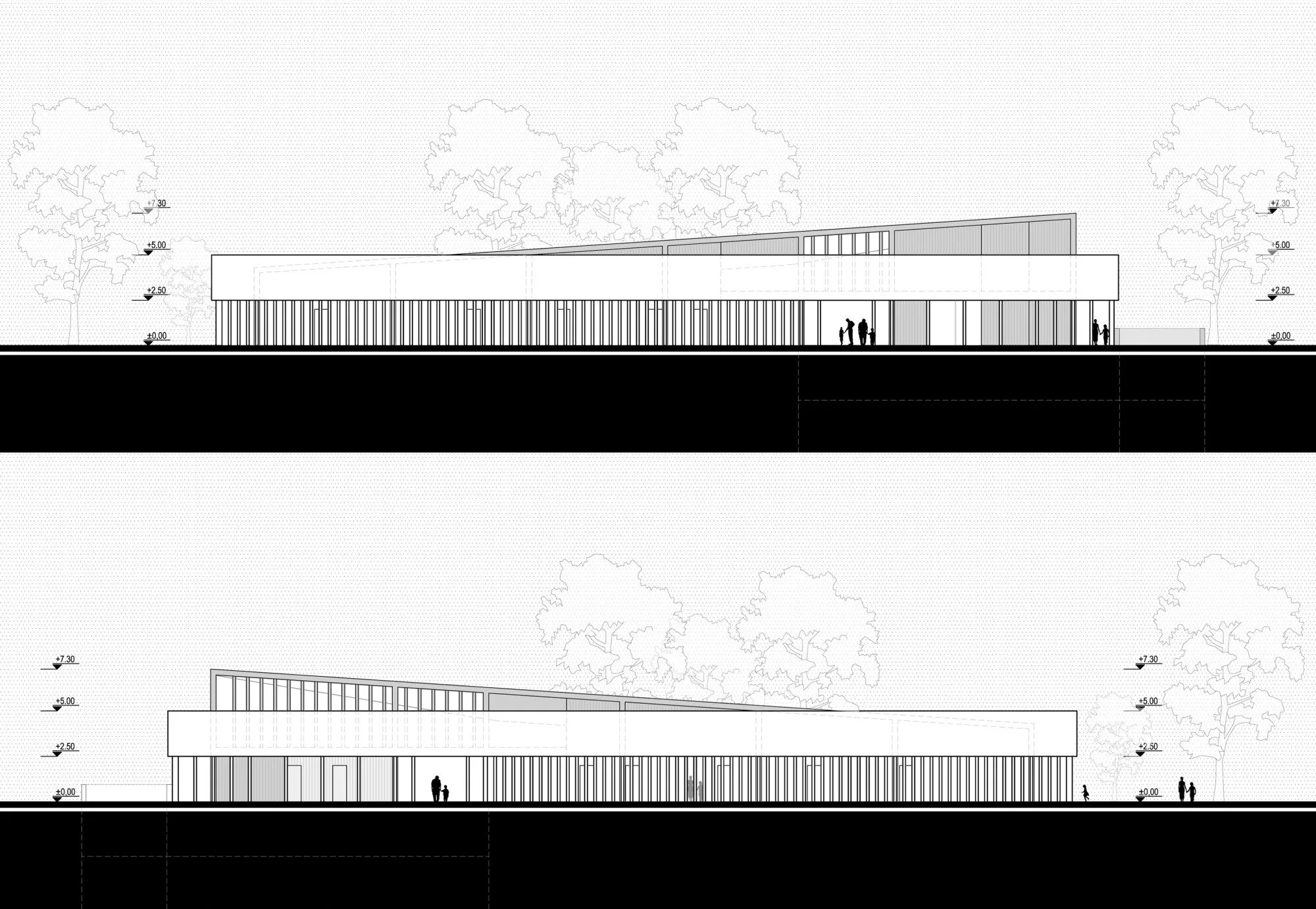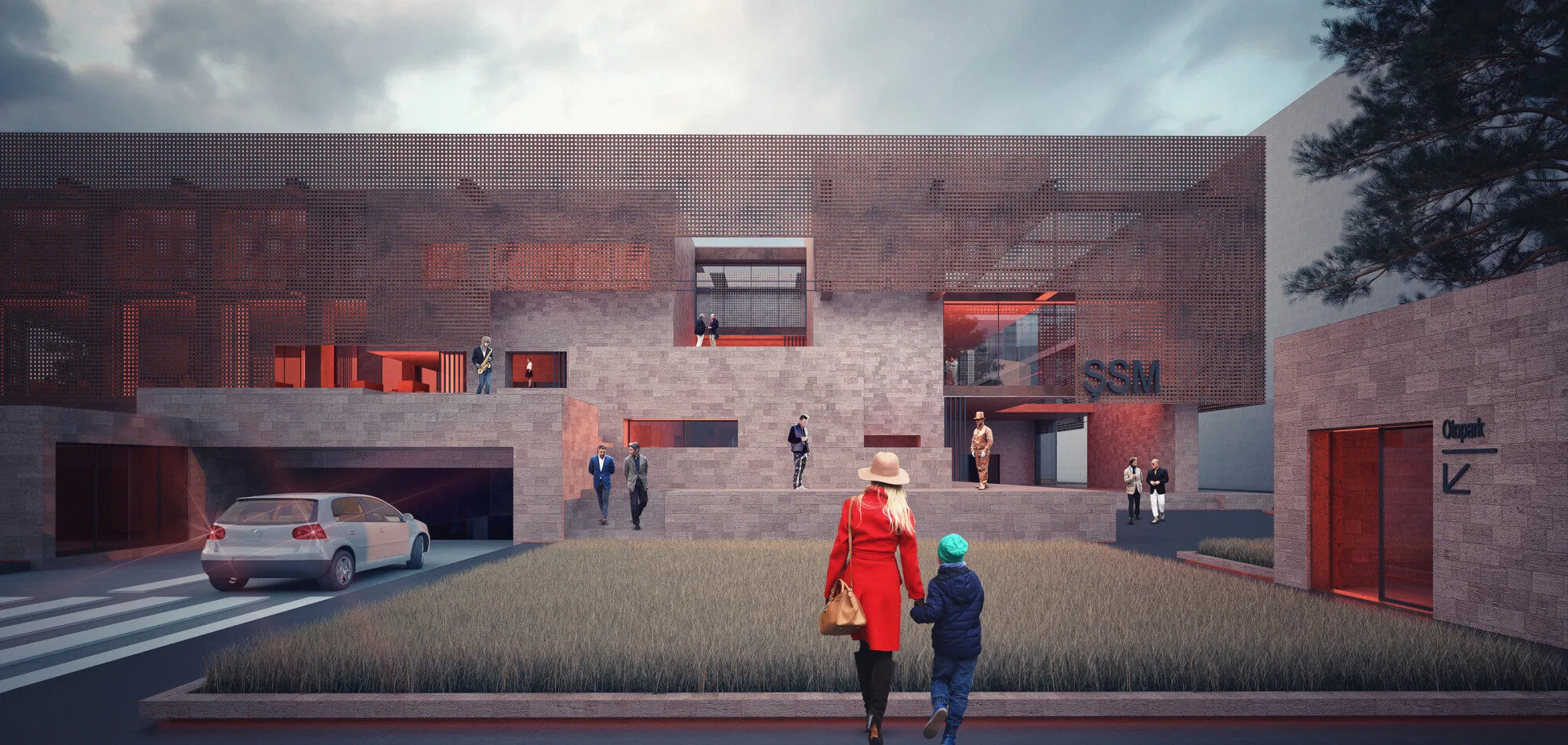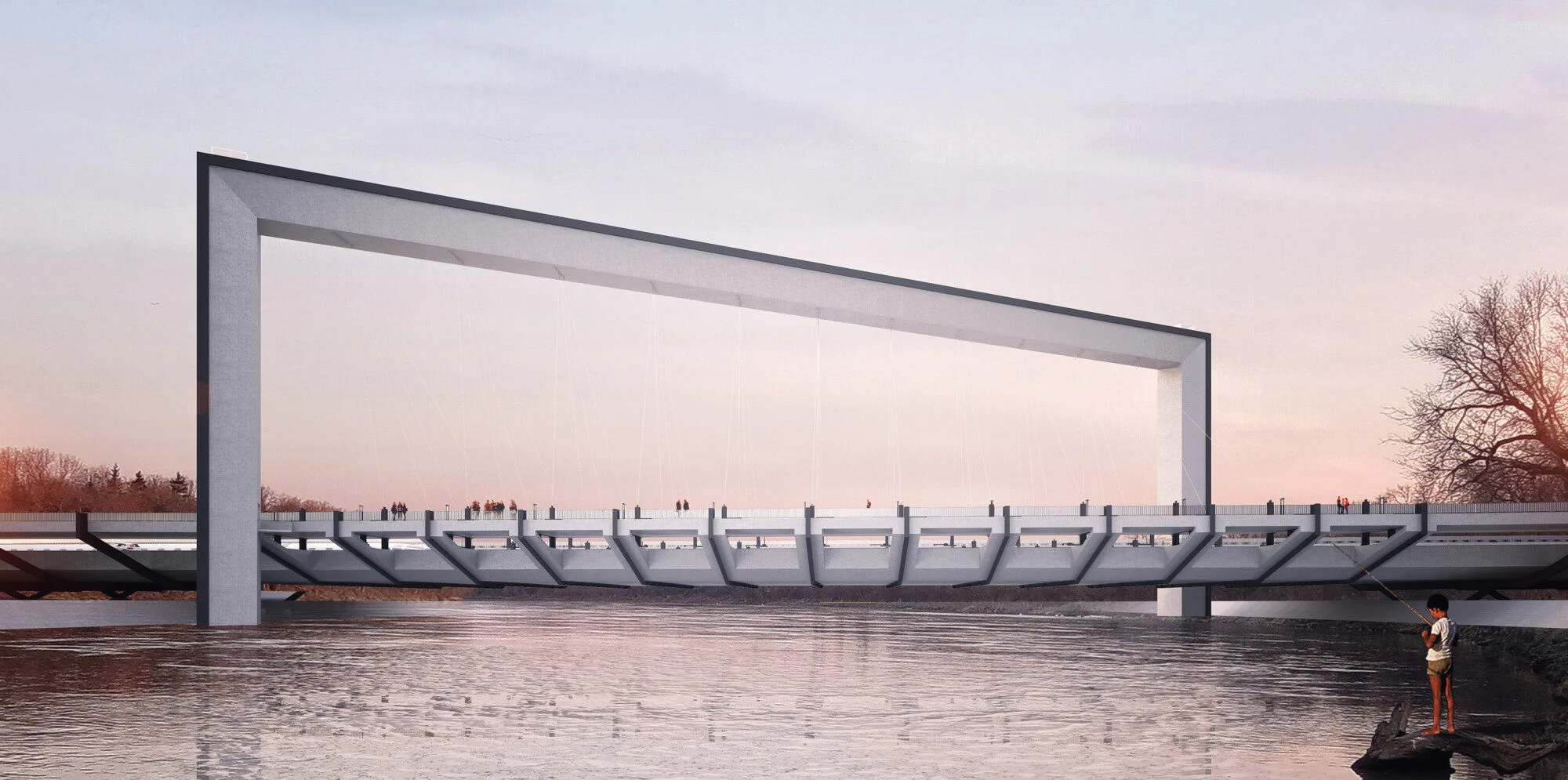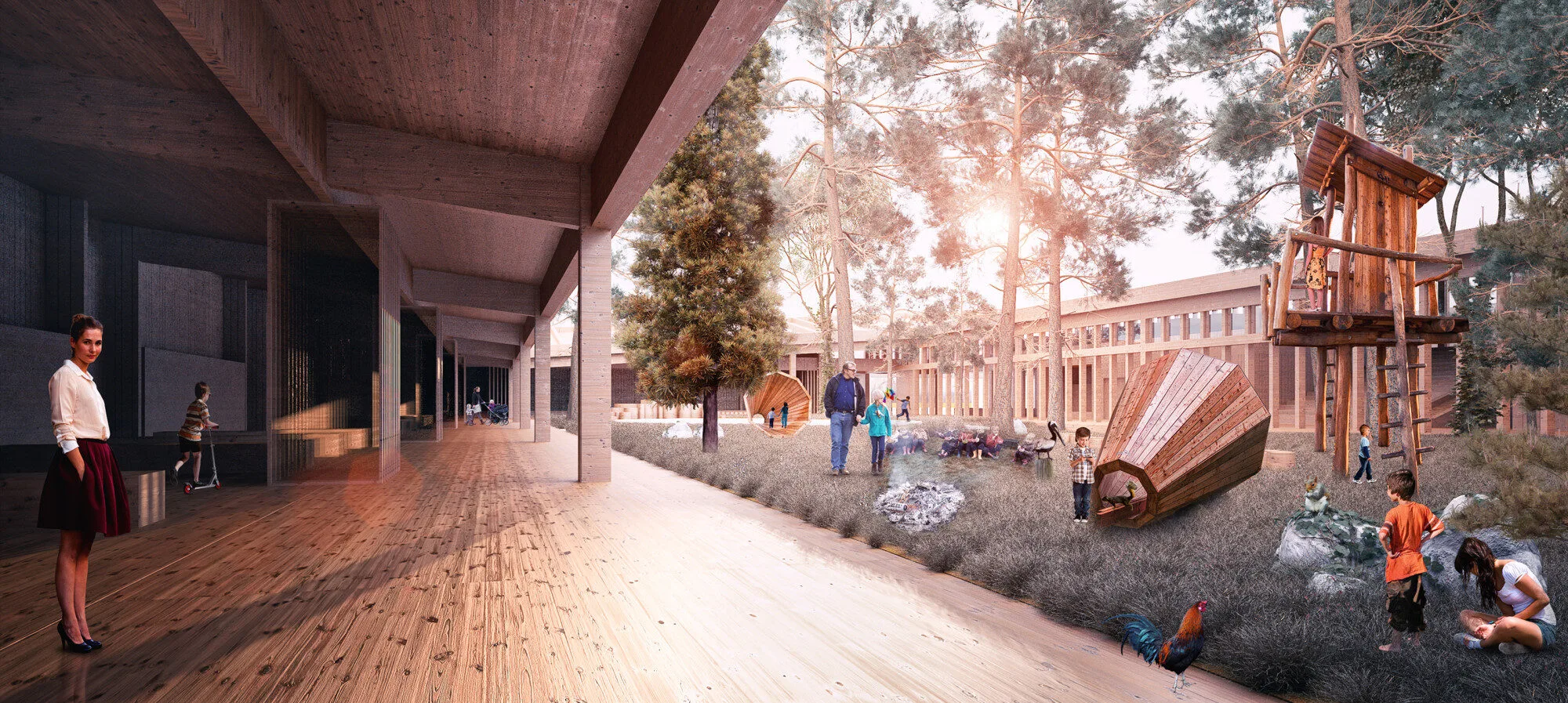
Bornova Kindergarten
Bornova Kindergarten
The orthogonal geometry of the design area emerges as a pivotal determinant in the massing strategy, simultaneously guiding the spatial organization and influencing the selection of the courtyard layout—a secondary world meticulously conceived for the engagement of children.
Bornova Kindergarten
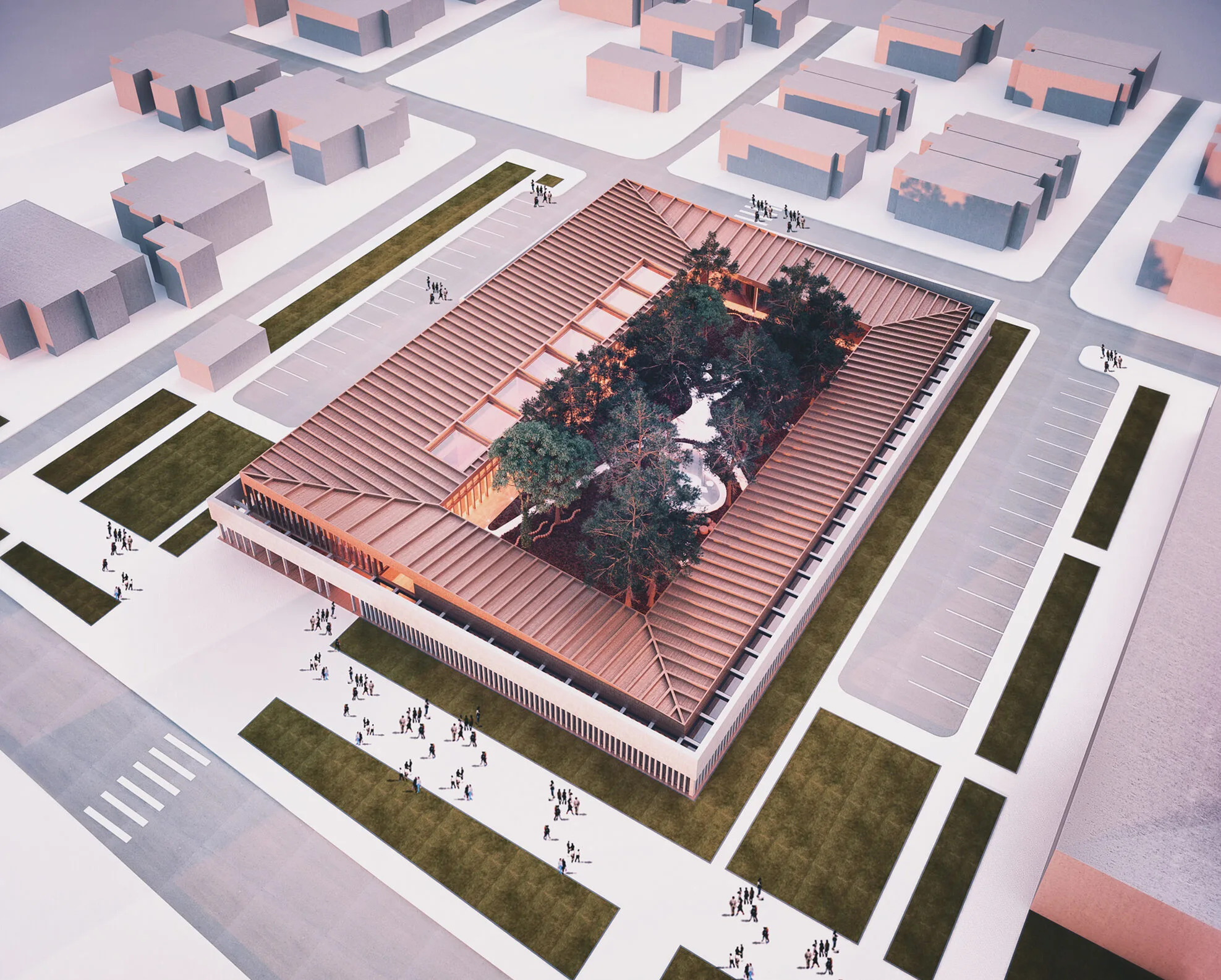
In this context, the design territory is methodically delineated through a series of interconnected walls. The outermost wall functions not only as the protective membrane of the complex structure but also establishes a robust boundary that defines the architectural ensemble. In contrast, the intermediate wall manifests as a closed volume, meticulously arranged to house various support spaces in a sequential alignment. Central to this configuration, the courtyard emerges as a distinct realm, entirely dedicated to the children's experience, fostering interaction and socialization within a secure environment.
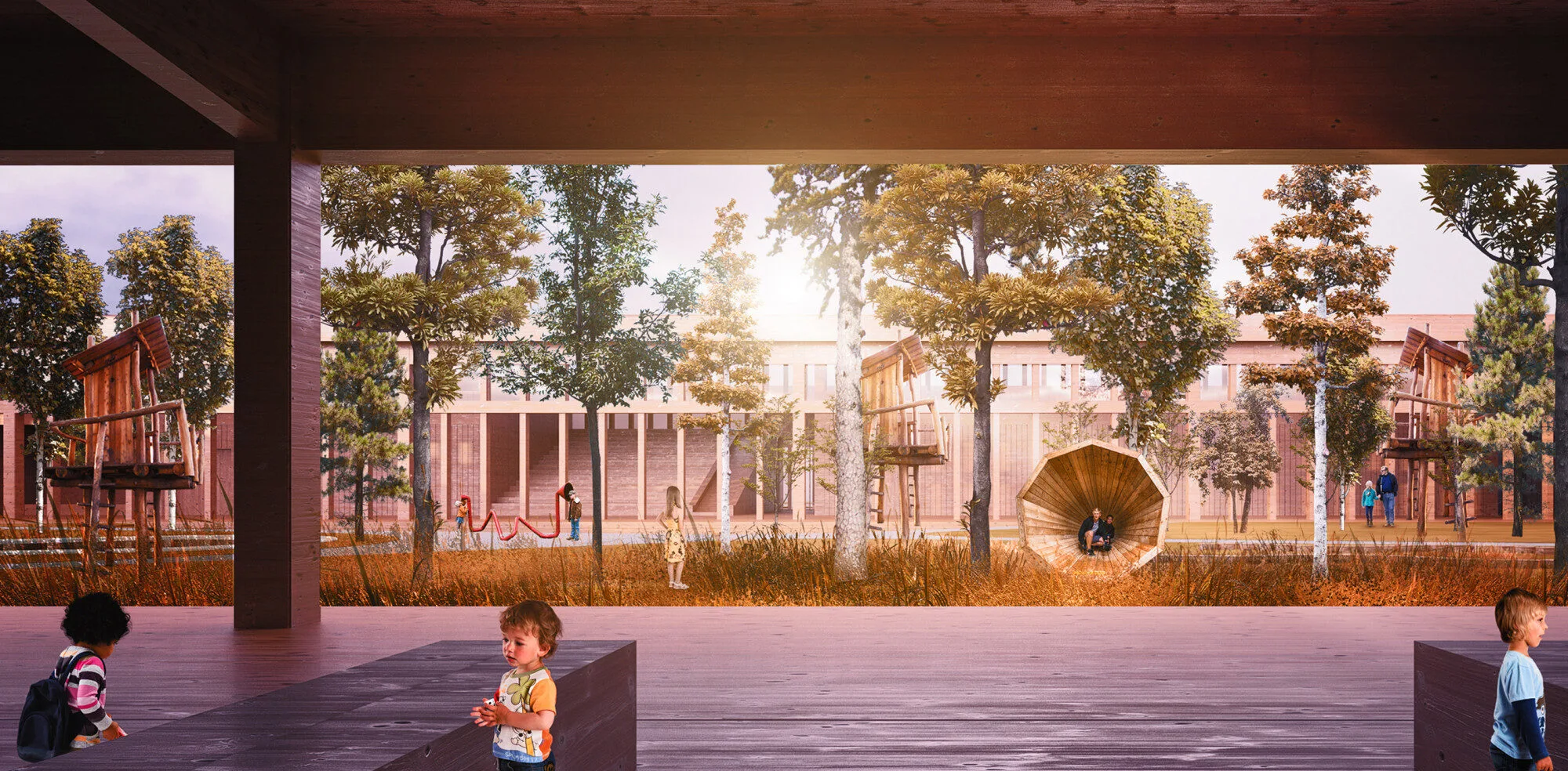
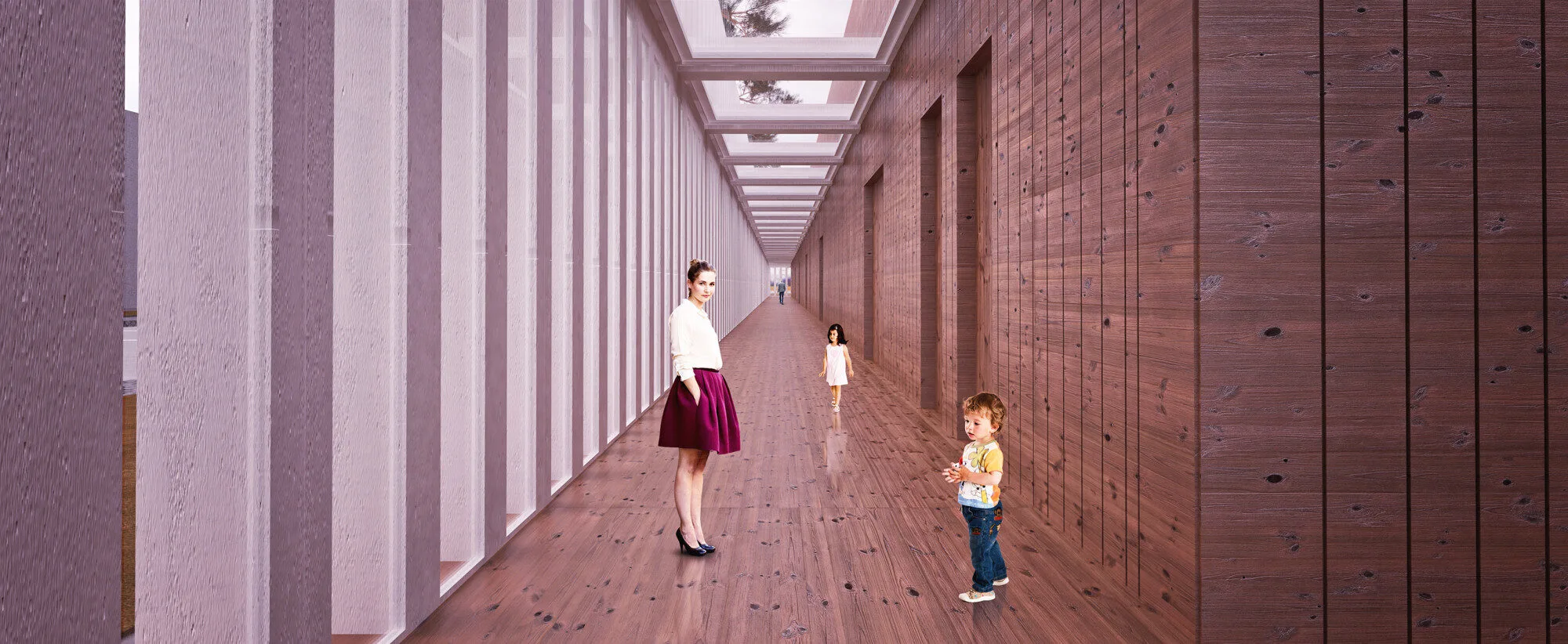
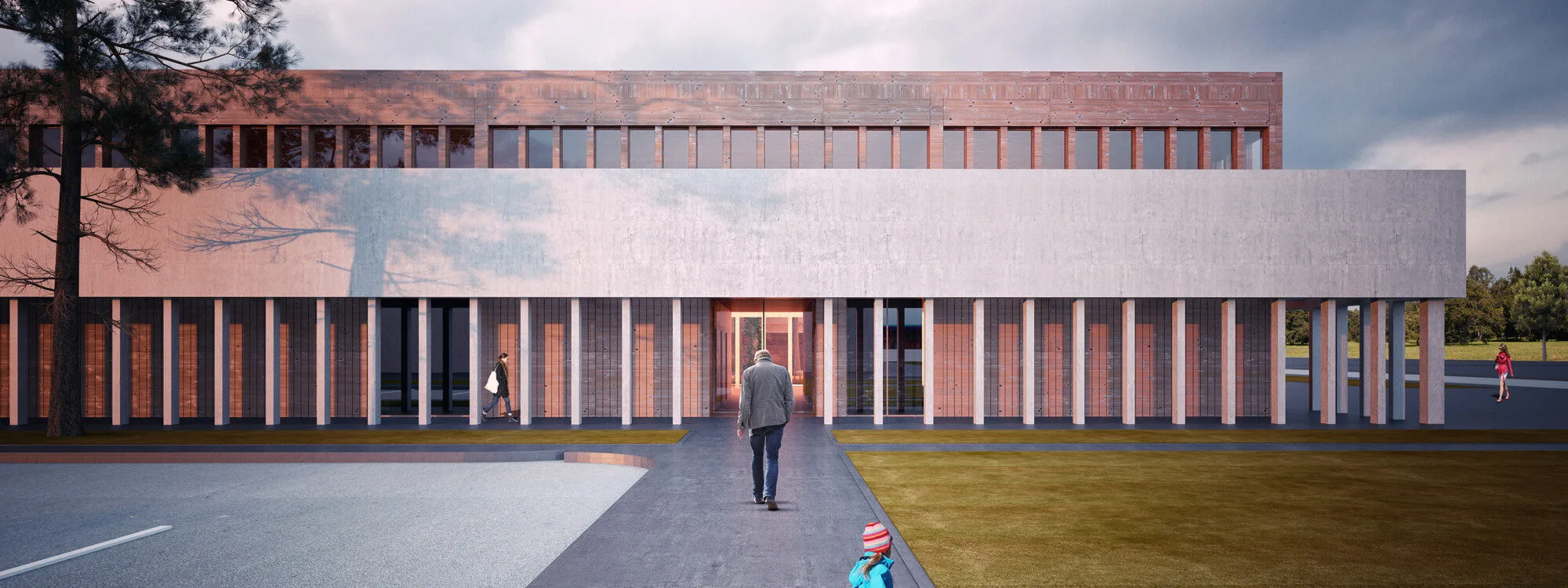
This deliberate differentiation is further echoed in the choice of materials employed throughout the project. The outer wall is enveloped in a solid façade that conveys a somewhat austere atmosphere, presenting a stark contrast to the vibrant essence of the courtyard, or "Children's World." Here, the design embraces an entirely wooden composition, infusing the space with warmth and tactile richness. The wooden materiality resonates profoundly within the courtyard, to the extent that even the structural components have been meticulously selected from timber, reinforcing this overarching perception of a nurturing and inviting environment.
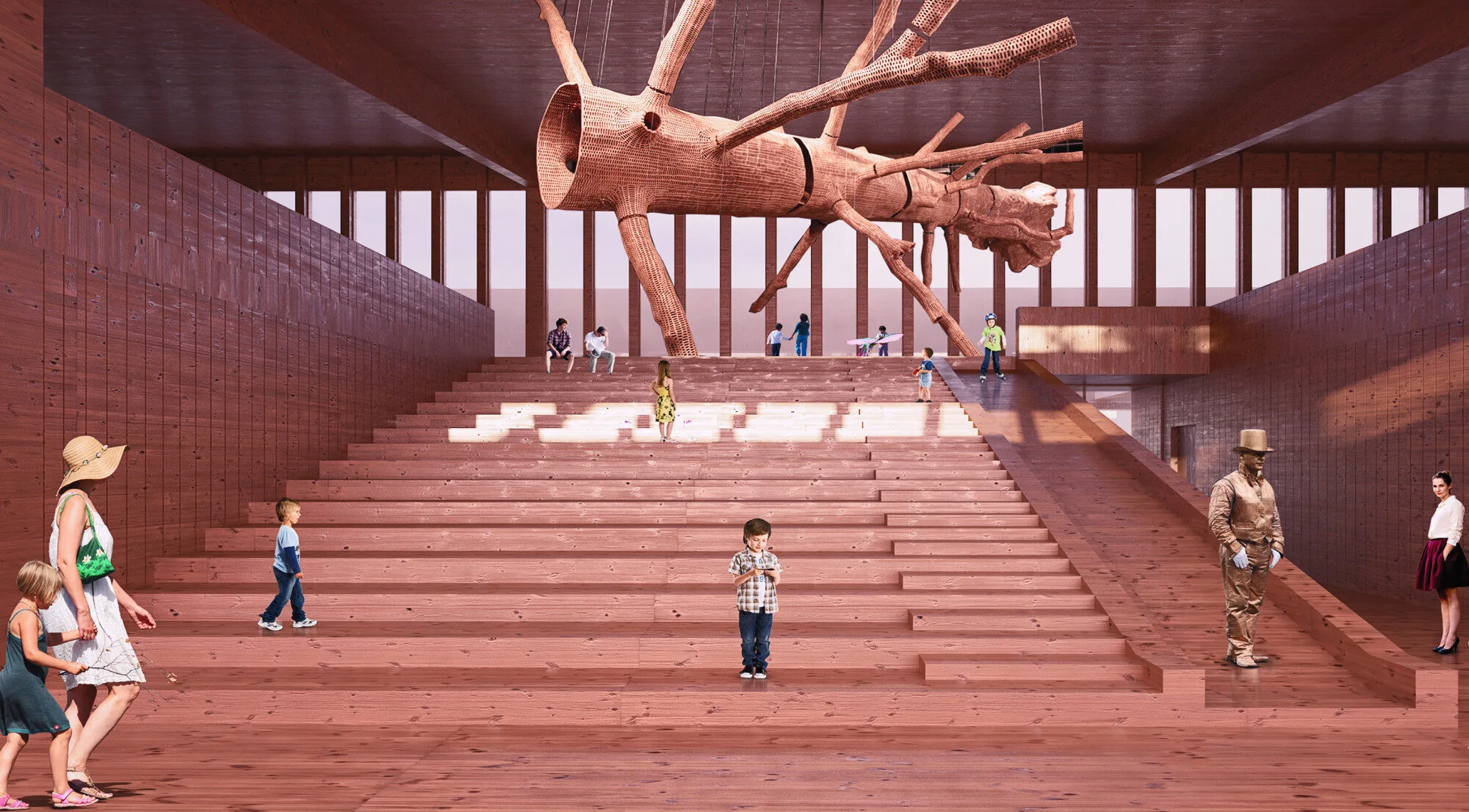
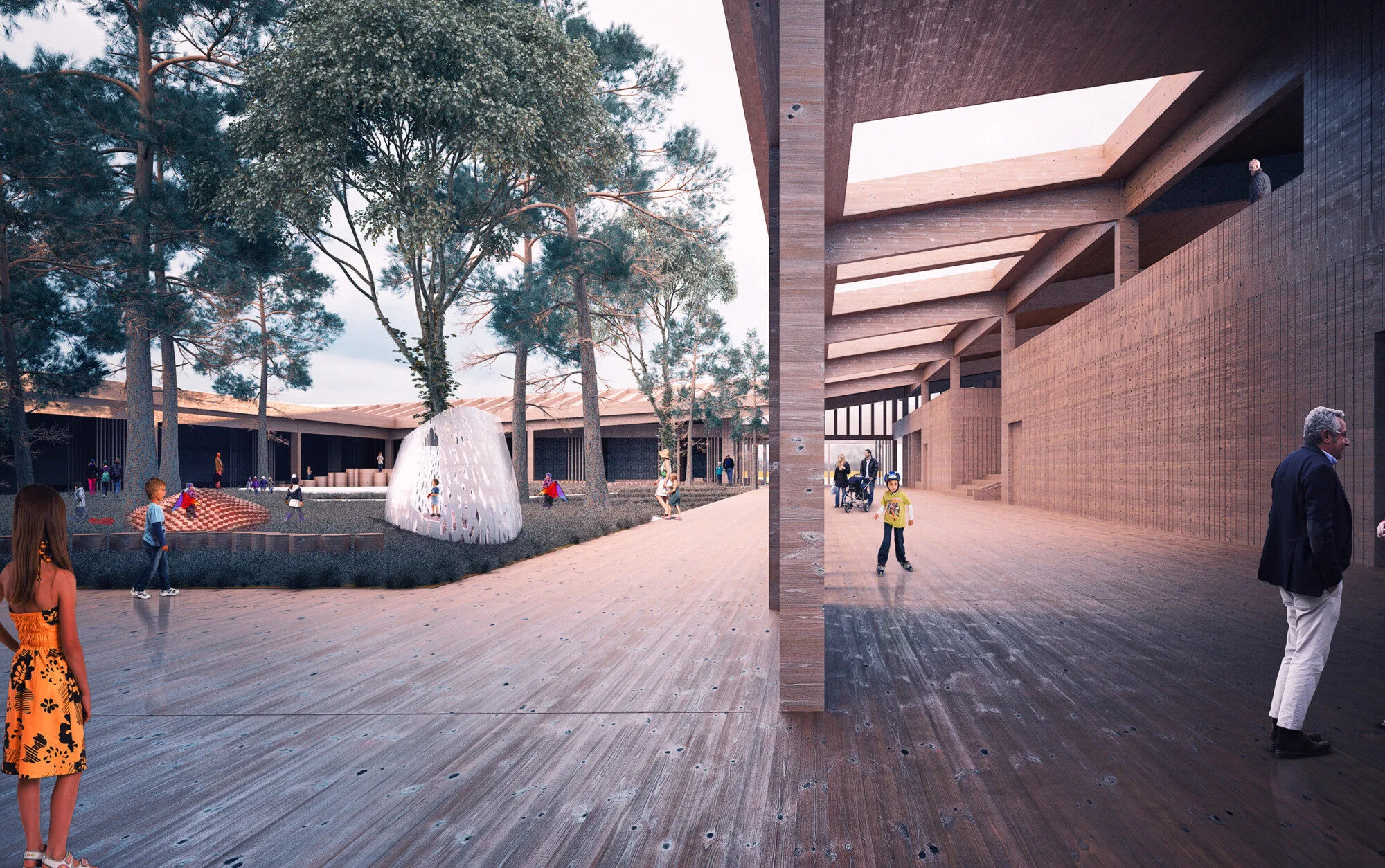
By fostering a distinct juxtaposition between the cold, protective exterior and the warm, playful interior, the design aspires to create a harmonious balance that resonates with the developmental needs of children, encouraging exploration, interaction, and imaginative play.
